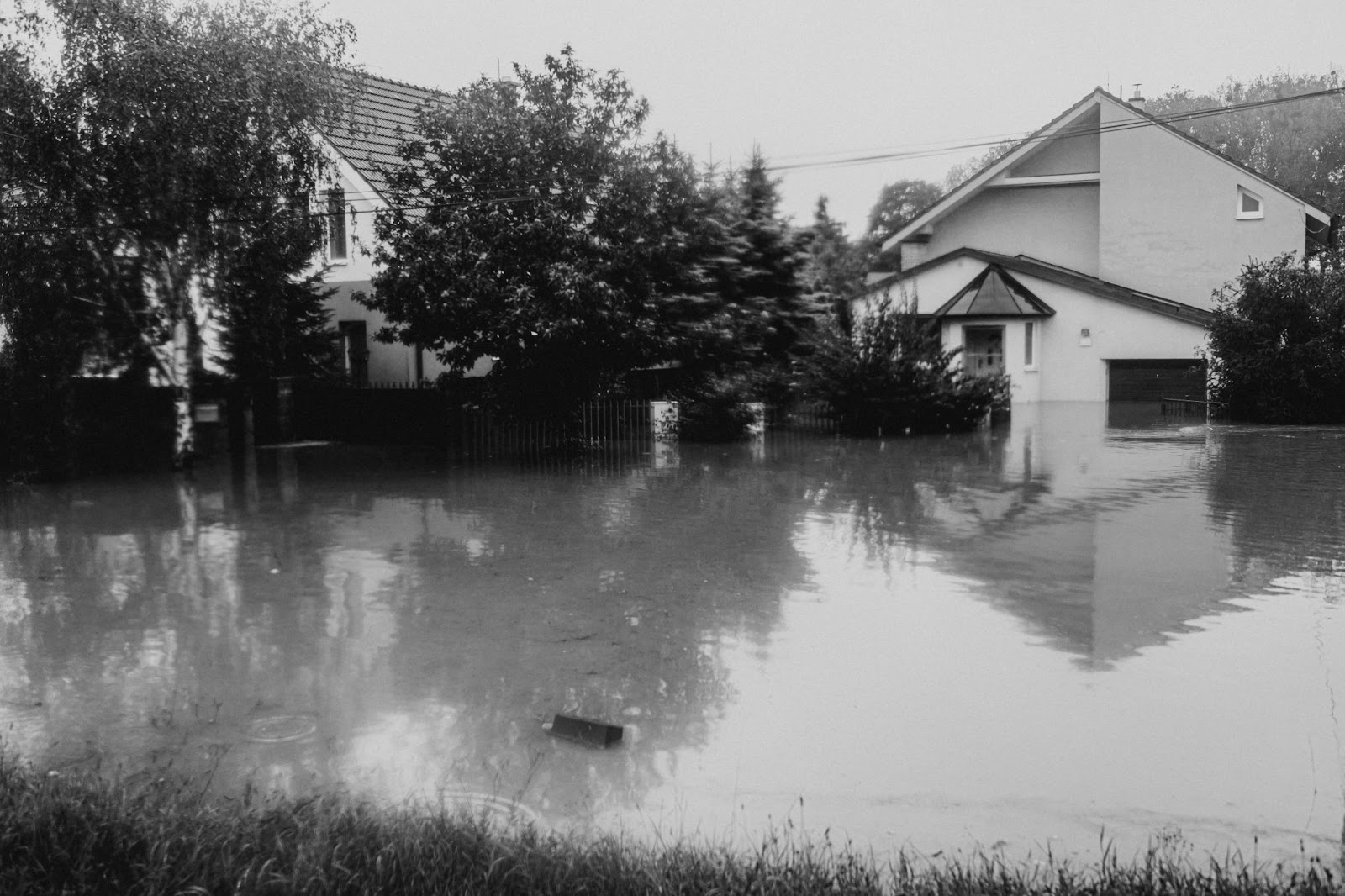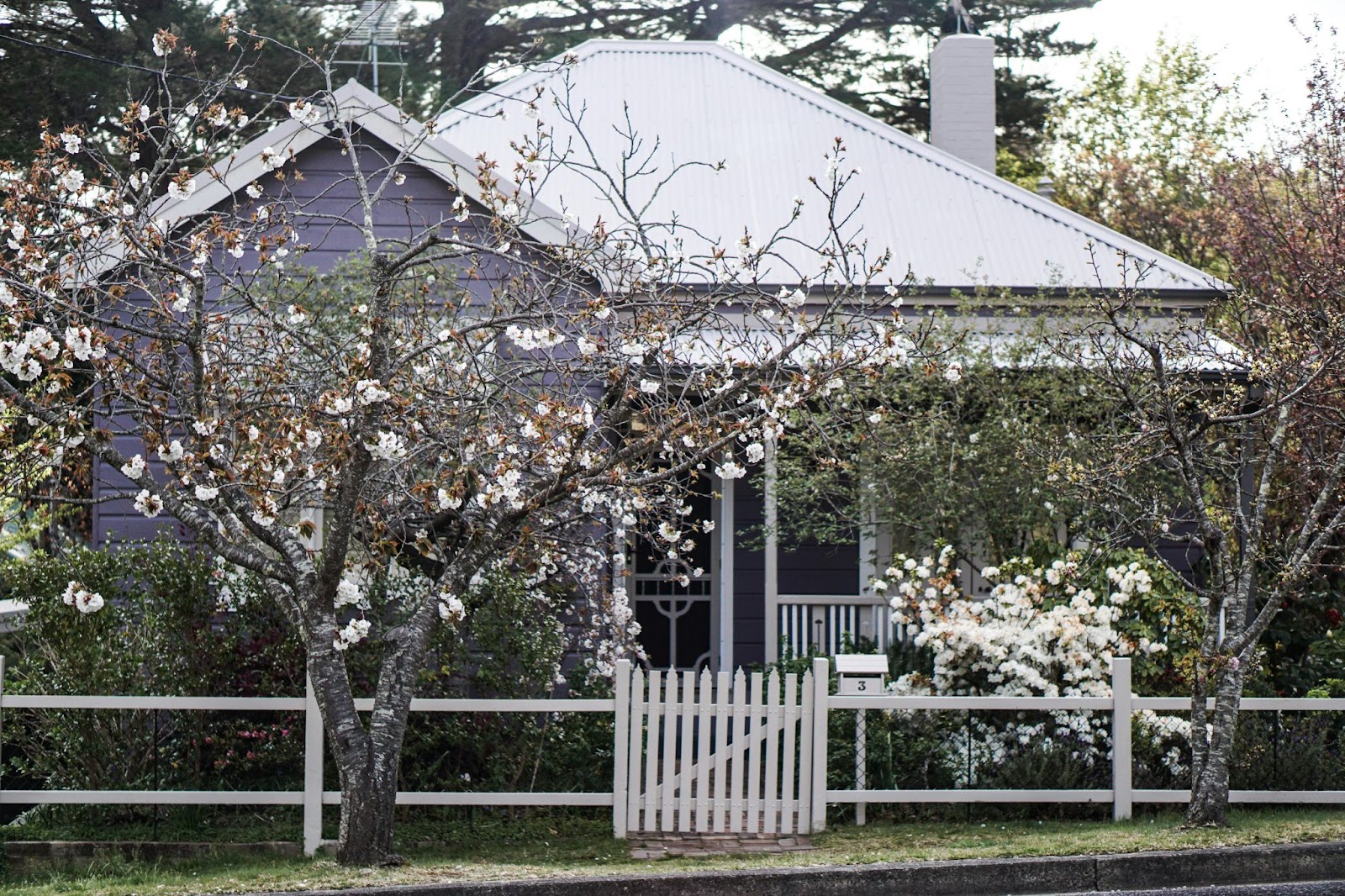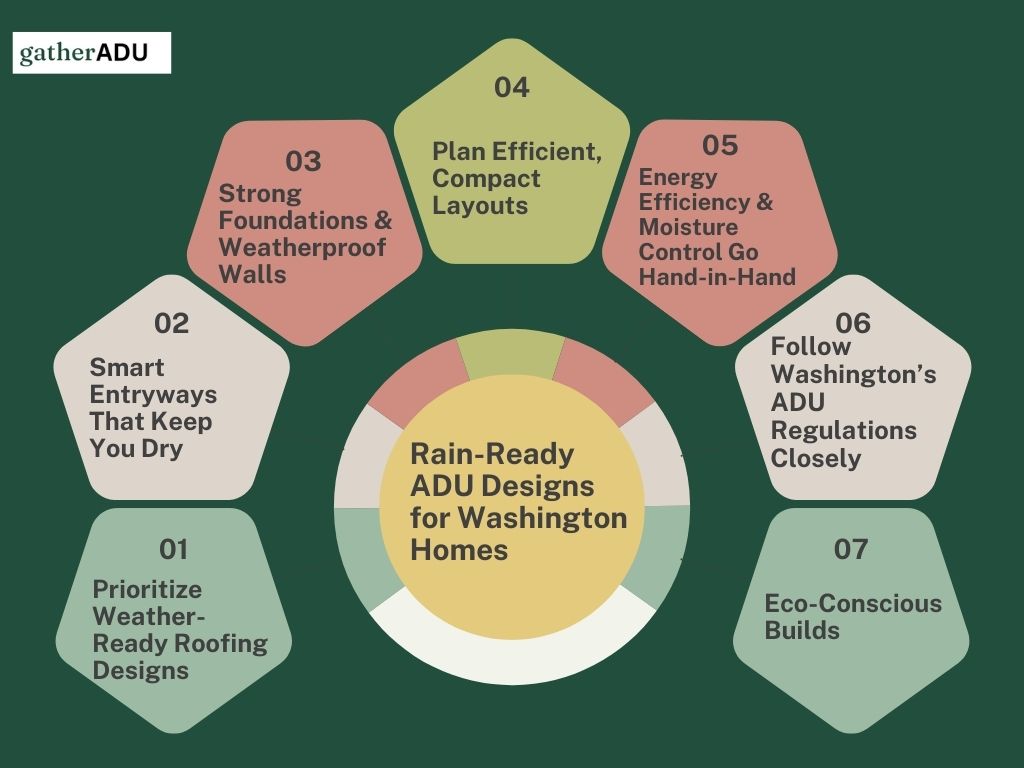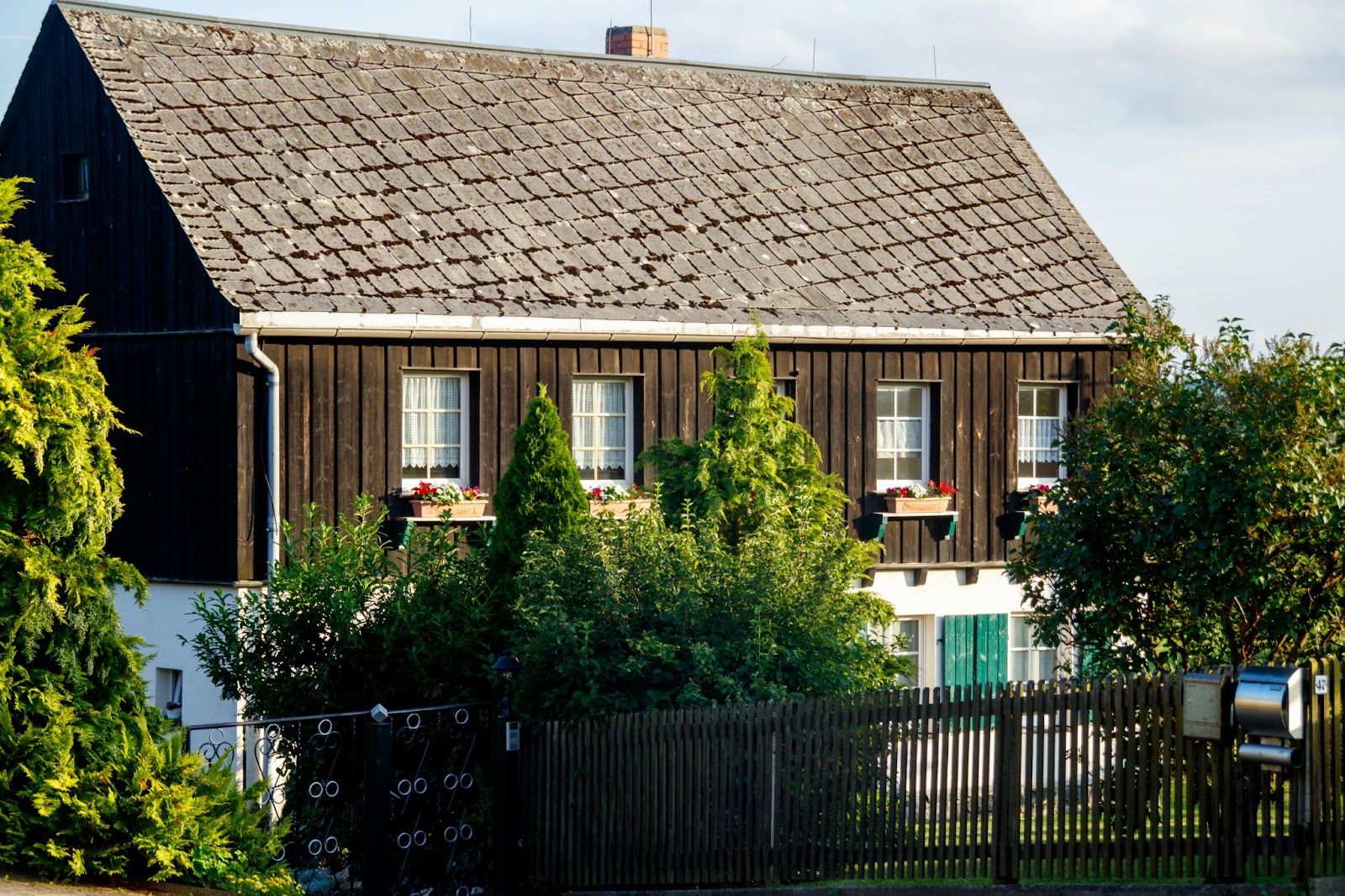ADU Knowledge
August 24, 2025
What ADU Home Plans Are Best Suited for Washington’s Rainy Climate?

.png)
Schedule a free appointment with one of our ADU experts.
Get ADU QuoteOr call: (323) 591-3717
In Washington’s wet climate, the best ADU home plans feature steep-pitched roofs, durable siding, and elevated foundations to keep moisture out. Covered entryways, extended roof overhangs, and high-performance drainage systems help protect against constant rain. Compact, energy-efficient layouts with moisture-resistant materials ensure long-term durability and low maintenance.
For designs that meet these climate challenges while staying compliant with local zoning, choose an experienced team like Gather ADU. Their tailored ADU plans incorporate rain-ready features, proper ventilation, and innovative layouts, ensuring your project stays dry, efficient, and beautiful year-round.

To ensure your ADU withstands Washington’s frequent rain, focus on features like steep-sloped roofs for better water runoff, moisture-resistant siding, raised foundations, covered entryways, and thoughtful drainage. Efficient ventilation and tight building envelopes also prevent indoor dampness, critical for durability and comfort. You can explore practical, code-friendly recommendations in the Washington State Department of Commerce ADU guidance for reliable, climate-conscious design. Below are further points to help you choose the best plan.
To protect your ADU from Washington’s frequent rain, the roof is the first line of defense. Thoughtful roof planning reduces water damage, prevents leaks, and extends the life of your structure.
Proper roofing not only safeguards your ADU but also reduces ongoing maintenance costs, keeping your home dry and structurally sound year after year.

Entryways are critical in rainy climates, as they are high-traffic zones where water can easily be tracked inside. Thoughtful design prevents interior moisture problems and keeps residents comfortable.
By designing entryways with weather protection, you create a functional and comfortable space while minimizing interior damage from wet conditions.
Foundations and walls must resist moisture to prevent long-term structural and health issues. Proper materials and drainage systems are key to avoiding mold and water damage.
Strong foundations and moisture-resistant walls create a durable ADU that performs well under constant rain, protecting your investment and ensuring a healthy living environment.
Compact ADU layouts help reduce exposure to rain while maximizing usable interior space. Well-planned rooms allow flexibility for all activities, even when outdoor areas are less usable.
Efficient layouts improve functionality and reduce exterior exposure, keeping your ADU safer from rain while creating bright, flexible living spaces.
Moisture control and energy efficiency are interconnected in rainy climates. Proper insulation and ventilation systems prevent condensation and maintain a comfortable interior environment.
Integrating energy-efficient design with moisture control ensures your ADU remains healthy, comfortable, and cost-effective even during long, wet seasons.
Compliance with local ADU laws ensures your project is approved without delays: Washington State zoning standards guide size, setbacks, and other crucial elements.
Following state regulations ensures smooth approval and avoids costly redesigns, allowing your ADU project to stay on schedule and within legal requirements.
Some ADUs in Washington go beyond code to combine sustainability with climate resilience. Innovative designs showcase how to make homes functional, energy-efficient, and adaptable.
These innovative projects demonstrate how thoughtful, eco-conscious planning can enhance the durability, comfort, and functionality of an ADU in Washington’s rainy climate.

Many Washington homeowners struggle with ADU projects because heavy rain, complex zoning, and improper planning can lead to costly delays, water damage, and design setbacks. Without expert guidance, choosing the right floor plan and weather-resistant materials becomes overwhelming, leaving you frustrated and unsure if your investment will hold up in the long run.
Gather ADU simplifies the entire process, offering expert-approved, rain-ready ADU plans that comply with local regulations. From selecting durable materials to optimizing layouts for moisture control, their team ensures your project stays on schedule, protects your investment, and delivers a comfortable, functional space. Visit Gather ADU to guide your project from concept to completion with confidence and ease.

Steep-pitched roofs, such as gable or A-fram, are ideal. They quickly shed rain, prevent pooling, and reduce the risk of leaks. Combining durable materials like metal or composite shingles with extended overhangs further protects walls, doors, and entries from water damage, ensuring long-term durability and low maintenance in the Pacific Northwest’s wet conditions.
Covered porches, breezeways, and recessed entries provide shelter from rain. Adding mudrooms or vestibules with durable flooring creates a buffer zone where residents can remove wet shoes and outerwear. These features prevent water from being tracked indoors, reduce moisture-related damage, and keep interior spaces clean, comfortable, and functional throughout Washington’s rainy seasons.
Raised slab-on-grade or crawlspace foundations are recommended. They elevate the ADU above wet ground, preventing water retention, mold, and structural damage. Coupled with sloped soil, French drains, and proper site drainage, these foundation types protect the building from constant moisture, ensuring a long-lasting, stable structure suitable for Washington’s heavy rainfall regions.
Use tight building envelopes with proper insulation, vapor barriers, and sealing to prevent condensation. Install heat recovery or energy-recovery ventilators to manage indoor humidity while supplying fresh air. Incorporate skylights or clerestory windows to maximize natural light while keeping rain out. Together, these measures maintain comfort, reduce energy costs, and prevent moisture issues indoors.
Washington allows up to two ADUs per lot, with a minimum gross floor area of typically 1,000 sq ft. Setbacks are often reduced compared to primary dwellings, and parking requirements may be lower. Impact fees cannot exceed 50% of those for the central unit. Always check local exceptions for sensitive zones like wetlands or septic proximity to remain compliant.
.png)
Not sure where to start with your ADU project?